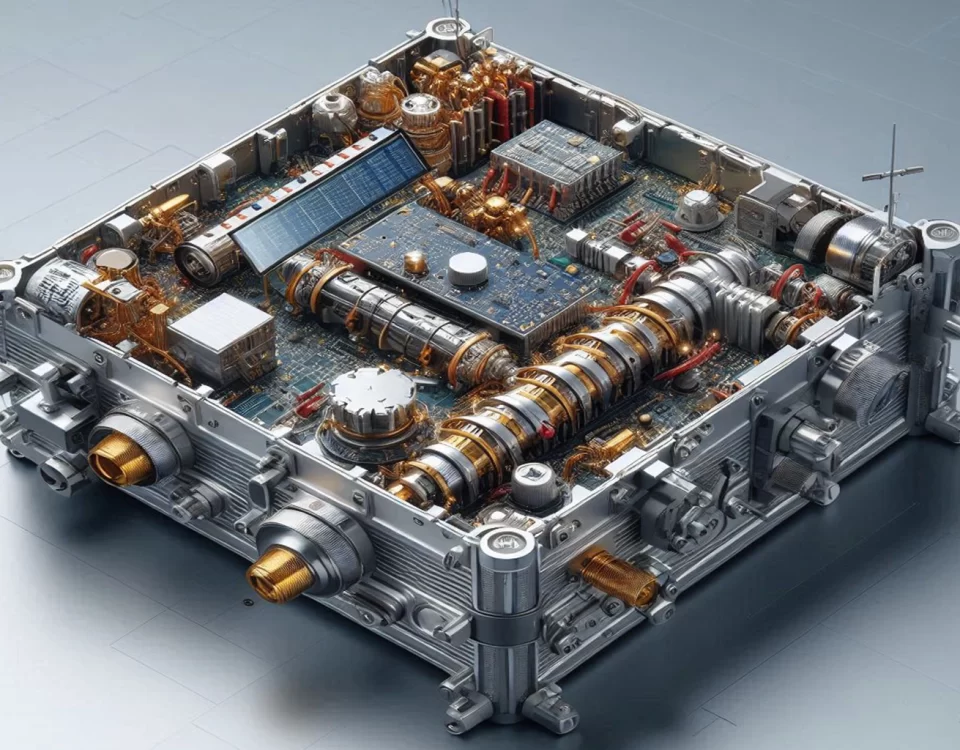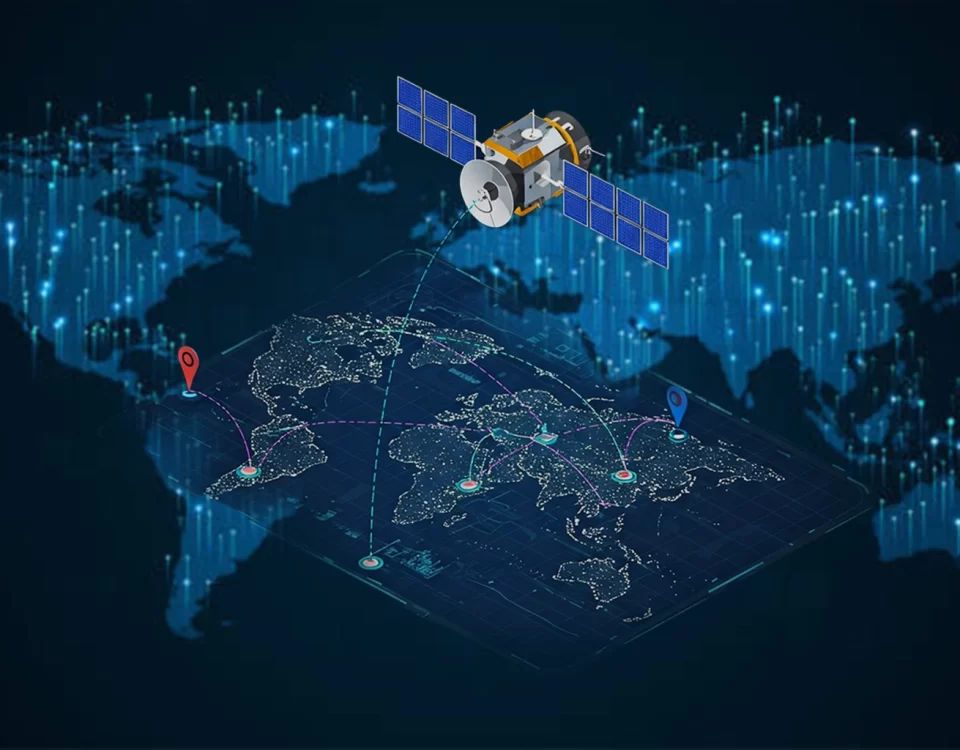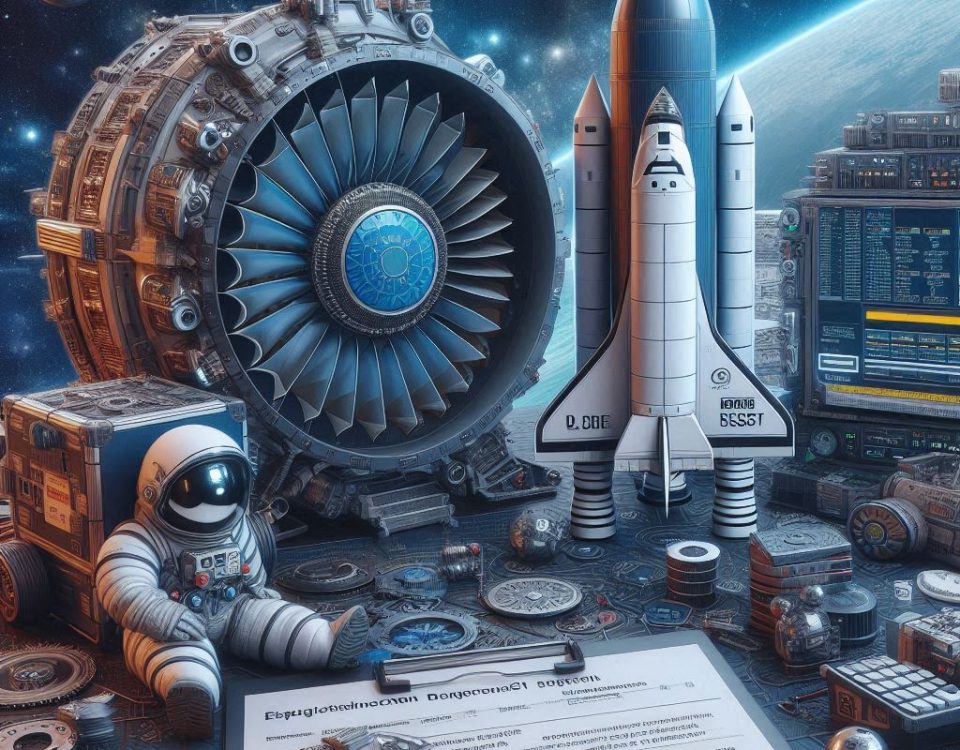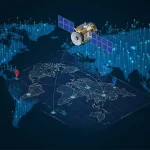
using GPS for precise orbit determination of LEO satellites
February 16, 2025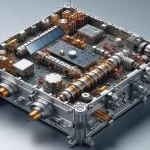
best S-band transceiver for reliable satellite telemetry
February 16, 2025Satellites in space can’t use GPS or landmarks to find their way. Instead, they use special tools to figure out which way they’re facing and where they are. One of the most important of these tools is the high-accuracy star tracker. Like a compass that uses stars, these devices precisely track stars to help satellites stay in their correct orbits, point their instruments accurately, and perform complex maneuvers. This essay will explore how star trackers work, how they’ve improved over time, the challenges they face, and why they’re so important for space exploration.
How does a star tracker work?
Star trackers work by precisely measuring the positions and movements of stars. Unlike old-fashioned tools used by sailors, today’s star trackers are small, automatic systems. They use special cameras (like those in digital cameras) to take pictures of the stars. A computer inside the star tracker then analyzes these pictures, identifying star patterns and comparing them to a built-in star map. By figuring out the angles between the stars it sees, the star tracker can tell exactly which way it’s pointing in space.
For missions that need very precise pointing, like those that take pictures of Earth, study space, or travel to other planets, a star tracker’s accuracy is extremely important. These high-accuracy star trackers achieve their precision in several ways. First, they use high-quality lenses and detectors to get clear pictures of the stars. Second, they rely on a very accurate star map. This map has to show the exact positions and movements of stars. Third, the computer programs that analyze the star pictures need to be very good at finding stars even when there’s noise or stray light. Finally, the star trackers are carefully tested and adjusted to make sure they’re as accurate as possible.
The evolution of star trackers
Star trackers have gotten much better thanks to new technology. Improved sensors can now see and track more stars at once, making them faster and more accurate. Smaller electronic parts have made the star trackers themselves smaller, lighter, and more energy-efficient – all important for spacecraft. Better computer programs help them work reliably even in difficult situations, like near bright objects. These improvements mean today’s star trackers are incredibly accurate, measuring angles smaller than a degree.
Even though they’re complex and advanced, star trackers still have a tough time in space. Radiation, extreme hot and cold, and the vacuum of space can all affect how they work. Bright light from the Sun or Earth can also get in the way. Plus, bits of space junk or dust can trick the star tracker into thinking they’re seeing stars. To deal with these problems, star trackers are built with special parts that can withstand radiation, have systems to control their temperature, and use shields to block stray light. They also use clever computer programs to tell the difference between real stars and fake ones.
High-accuracy star trackers are used in many different space missions. For satellites that take pictures of Earth, they make sure the cameras point exactly where they need to, so we get clear, detailed images. Space telescopes also rely on star trackers to stay pointed at the right spot in the sky, letting us see distant stars and galaxies clearly. When spacecraft travel to other planets, star trackers help them figure out where they are and make sure they stay on course. They even help robotic arms and other tools explore planets.
The future of star trackers
In the future, even better star trackers will be key to new space missions. Scientists are working on new technologies, like better sensors and computer programs, to make star trackers even more accurate, reliable, and smaller. Combining star trackers with other navigation tools, like those that measure movement or, where possible, GPS, will create even more precise navigation systems. And if we can build star trackers that can work near bright objects or in high-radiation areas, we’ll be able to explore even more of space.
In short, high-accuracy star trackers are absolutely essential for satellites to point and navigate precisely. By accurately tracking stars, they give satellites the information they need for all kinds of missions, from observing Earth to exploring other planets. With ongoing improvements and research, star trackers will be even more important for future space exploration, helping us learn even more about the universe. As we travel farther into space, these “star compasses” will guide us, making sure our spacecraft can explore with the precision needed to unlock the mysteries of the cosmos.



